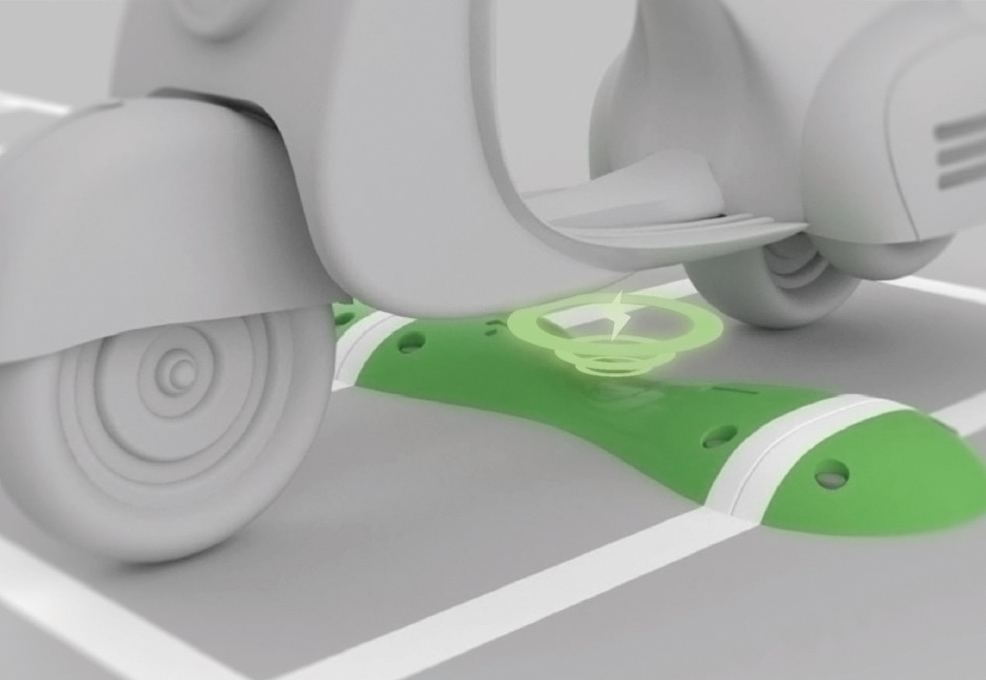Lifting the Veil on Drinking Water Safety in Laguna de Bay - Taiwan-Philippines Joint Water Quality Research and Innovation C...

Author(s)
Chien Hsiung Chen, Lee En Kao & Liang Yuan CheBiography
Dr. Chen is currently a full-time professor at the Department of Design in National Taiwan University of Science and Technology (Taiwan Tech). His cross-disciplinary research interests involve human factors in design, industrial design, user experience research, and user interface usability engineering.
Academy/University/Organization
National Taiwan University-
TAGS
-
Share this article
You are free to share this article under the Attribution 4.0 International license
- ENGINEERING & TECHNOLOGIES
- Text & Image
- October 22,2019
By sharing the wireless power charging resources, the sharing economy will allow users to enjoy the services at a lower cost and reduce the waste of power energy. The sharing of wireless power charging facilities provides a key platform for the development of shared services pertinent to electric vehicles. If we can effectively improve users’ willingness to use the shared services for transportation purposes, it may indirectly reduce the problem of resource allocation, such as insufficient parking spaces. Doing so could indirectly reduce the environmental pollution as well. Since parking spaces and electric vehicles can be viewed as important shared resources, they can be integrated to provide users with more service guarantees without the need to worry about finding a parking space. The parking space can be designed as a wireless power charging platform for various types of electric vehicles. It may also make the sharing of wireless power charging services more convenient and safer to use.
Imagine living a life with no worries about finding a parking space and also helping contribute zero CO2 emissions on the way to work each day. That is, when we wake up in the morning and finish our breakfast, a smart mobile assistant (i.e., a tablet or a mobile phone) can help us to plan a shortcut to work based on real-time updates of traffic information. It may also help us to book a nearby shared electric vehicle in advance. The electric vehicle may have already been fully charged before our departure, and the cost of our drive to work will be calculated according to the actual travel distance. When we are approaching our destination, the smart mobile phone may display the nearby wireless power charging parking spaces. We can then quickly park the vehicle on the spot, and pay the rental fee via our mobile phone with just a gentle touch. The electric vehicle which we have just parked will be recharged in preparation for the next user.
The density of Taiwan's vehicles is increasing every year. However, the number of parking spaces continuously faces the dilemma of short supply. Where the available city space is limited and no more parking spaces can be added, it is necessary to create road service policies to help promote changes in urban traffic patterns in order to solve the long-standing traffic problems.
In recent years, the electric vehicle industry has quickly emerged. Shared rental services have also opened to users so that people can commute to work without the necessity of having their own vehicles. However, before users enter such a service system, whether they can easily grasp the concept of "electric energy" has become an important factor for their understanding. Currently, whether an electric vehicle is charging or its battery needs to be replaced for further usage, these actions may cause damage to the battery due to improper operations. It is important that an effective shared power supply facility be established so that users may feel more secure and be more willing to register to use the shared car rental service system that uses the wireless power charging facility.

It is a public service design concept of shared power supply. That is, it widely distributes the wireless power charging facilities to electric vehicle parking spaces. The parking space can be used as a wireless power charging platform to instantly charge the electric vehicle, regardless of brand. This may also enhance users’ motivation to use the public electric vehicles. Users who do not have their own transportation device may take public transportation first to a certain location and make a connection by using the shared electric vehicle to their destination. The shared wireless power charging facilities can also support wirelessly chargeable batteries developed by different corporate companies with the same power functions to provide more convenient use. For those users who own their electric vehicles, it could be more convenient to park and charge the vehicle simultaneously. The parking and charging fees can be calculated at the same time. Users may pay the total cost via the smart payment system installed on their smart phones which will also show the information of charging progress on the displays.

STAY CONNECTED. SUBSCRIBE TO OUR NEWSLETTER.
Add your information below to receive daily updates.




